Illinois is a midwestern state known for its miles of rolling hills, prairies, farmland, and wetlands. And due to its diverse habitats and continental climate, the state has many summer, winter, and year-round birds. There are over 450 bird species that call Illinois home for at least part of the year. Discover seven red birds tweeting in Illinois this year and learn about their habitats, diet, and how to attract them to your backyard feeder.
1. Northern Cardinal
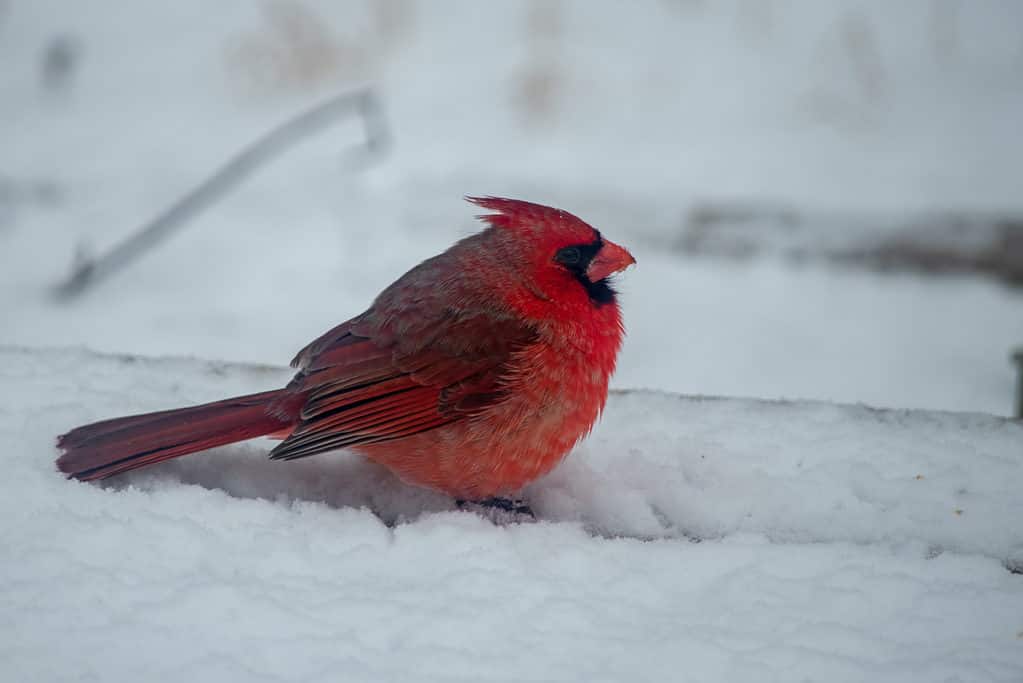
Male northern cardinals are bright red with black faces.
©iStock.com/Diane079F
Identification: The cardinal is a large songbird with a short, thick bill and a long tail. Males are bright red with black faces and a prominent crest. And females are dull brown with a red tinge.
Habitat and Migration: Look for these birds in many habitats, including backyards, parks, forest edges, and wooded lots. Northern cardinals live year-round in Illinois.
Diet: They eat seeds, fruits, beetles, crickets, moths, centipedes, cicadas, and other insects.
Nest: They build twig cups placed in a tree or shrub.
How to Attract to Your Yard: Place sunflower seeds in a bird feeder.
2. House Finch
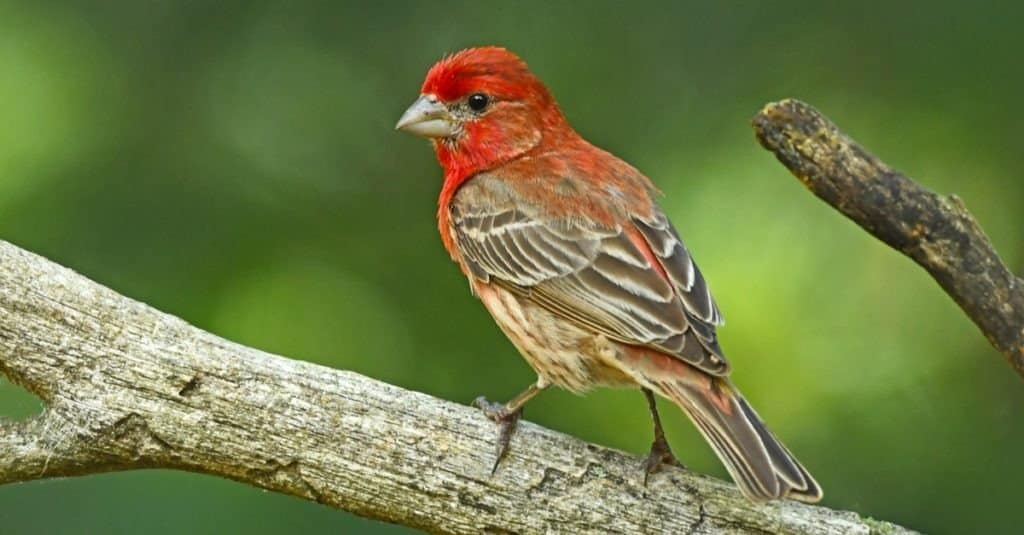
The
house finch
lives in human-populated areas, like parks, yards, cities, and towns.
©Brian A Wolf/Shutterstock.com
Identification: The house finch is a small species, featuring a large beak and a notched tail. Adult males have rosy red plumage on their faces and breasts. And their back and tails are streaky brown.
Habitat and Migration: This bird lives in human-populated areas, such as parks, yards, cities, towns, farms, and forest edges. They spend the entire year throughout Illinois.
Diet: Seeds, fruits, and buds are their food sources.
Nest: They nest in small leaf and twig cups placed in trees or on rocky ledges.
How to Attract to Your Yard: Provide black oil sunflower seeds.
3. Summer Tanager
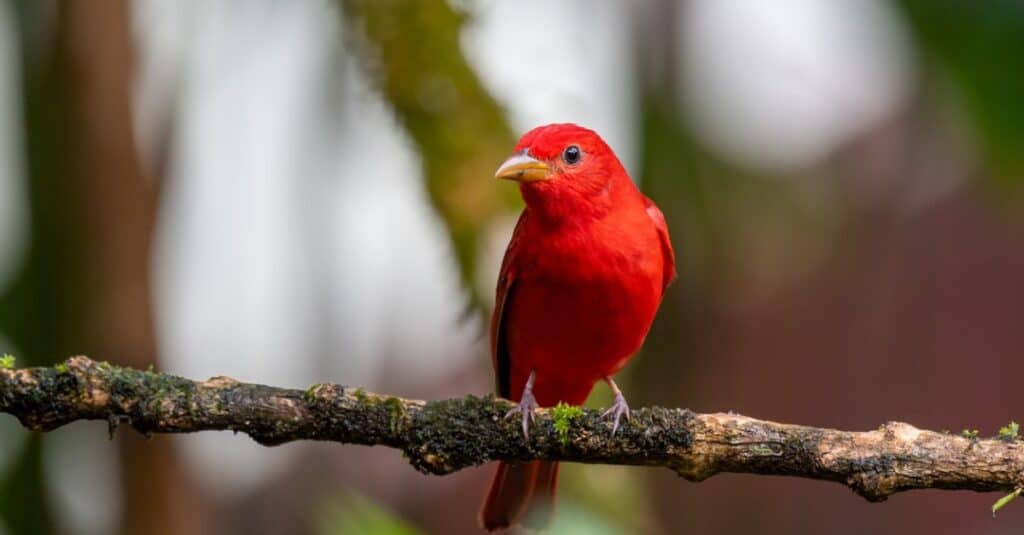
Summer tanagers are the only completely red birds in North America.
©iStock.com/Dave Kempe Photography
Identification: Summer tanagers are plump, medium-sized songbirds with thick bills and long tails. This species features sexual dimorphism, meaning males and females look completely different. Males are bright red all over, while females are yellowish green.
Habitat and Migration: You will find these birds in open forests, especially deciduous and mixed woodlands. They are long-distance migrants who breed in Southern Illinois before heading to Mexico, Central America, and South America for the winter.
Diet: They usually consume bees, wasps, spiders, beetles, ants, and other insects. They will occasionally eat fruit.
Nest: They construct woven grass cups in a tree fork or leaf pile.
How to Attract to Your Yard: They may visit if you have berry bushes and fruit trees.
4. American Robin
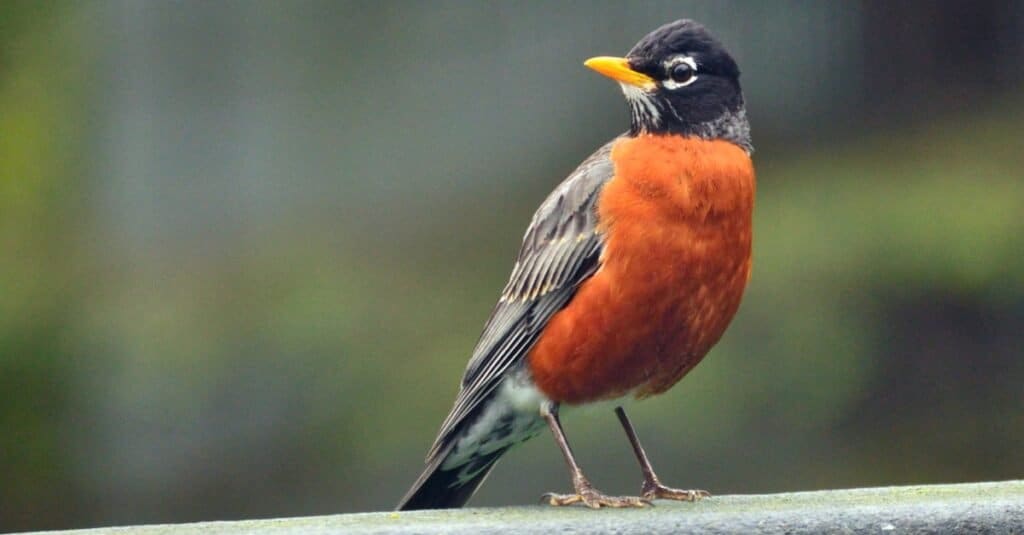
The male
American robin
is generally the last bird heard singing at sunset.
©iStock.com/PhotosByMSA
Identification: American robins are large songbirds with rounded bodies, long tails, and long legs. They have grayish-brown plumage above and reddish-orange feathers below.
Habitat and Migration: These common birds inhabit gardens, parks, yards, fields, farmland, woodlands, and forests. They live across Illinois all year.
Diet: Earthworms, snails, insects, small snakes, and fruits are their favorite foods.
Nest: Dead grass and twig cups placed on horizontal branches are their nesting spots.
How to Attract to Your Yard: Provide chopped berries, apples, and mealworms.
5. Scarlet Tanager
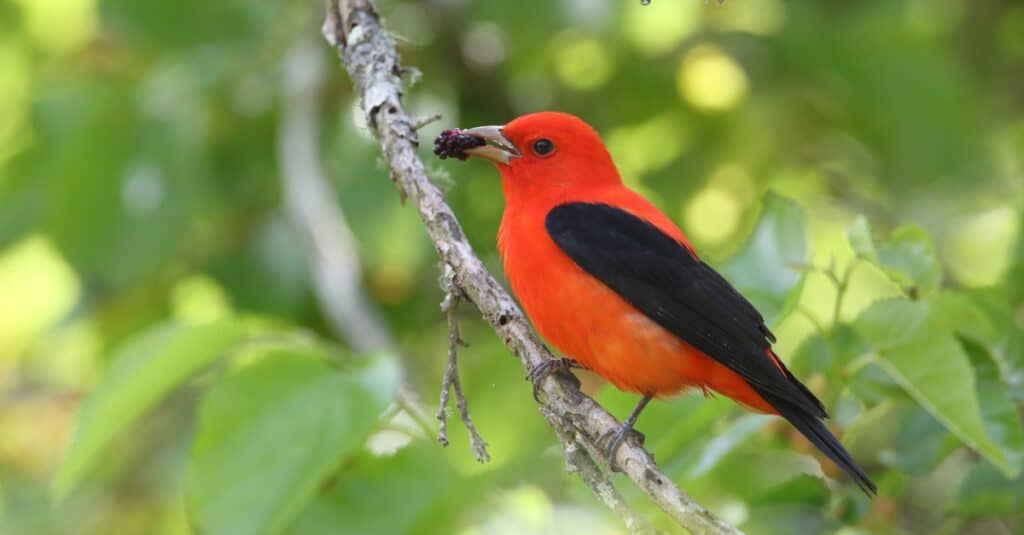
Male scarlet tanagers have very distinctive black wings and tails.
©iStock.com/BrianLasenby
Identification: Scarlet tanagers are medium-sized songbirds with round bodies and thick bills. Breeding males are bright red with black wings and tails. They molt into a drab olive-yellow after the breeding season.
Habitat and Migration: They breed in deciduous and mixed forests throughout Illinois. You can see them during spring and summer.
Diet: They snack on insects, fruits, and buds.
Nest: These birds form loosely woven twig cups placed in a shaded tree fork.
How to Attract to Your Yard: Plant berry bushes, such as blackberries, huckleberries, strawberries, and raspberries to lure these birds.
6. Red Crossbill

The red crossbill has a bill that overlaps, while the
northern cardinal
‘s bill is thick and conical.
©iStock.com/bobloblaw
Identification: The stocky red crossbill has an unusual bill, hence the name. They are easy to recognize due to their twisted beaks and short, notched tails. Males are rusty red with brownish wings and tails. And females are yellow to olive brown.
Habitat and Migration: They typically live in coniferous forests but sometimes venture into towns and backyards. These northern birds spend their winters across Illinois.
Diet: These birds primarily eat seeds.
Nest: Bulky twig cups in dense foliage are their nest of choice.
How to Attract to Your Yard: Place sunflower seeds in a feeder and plant evergreen trees
7. Purple Finch
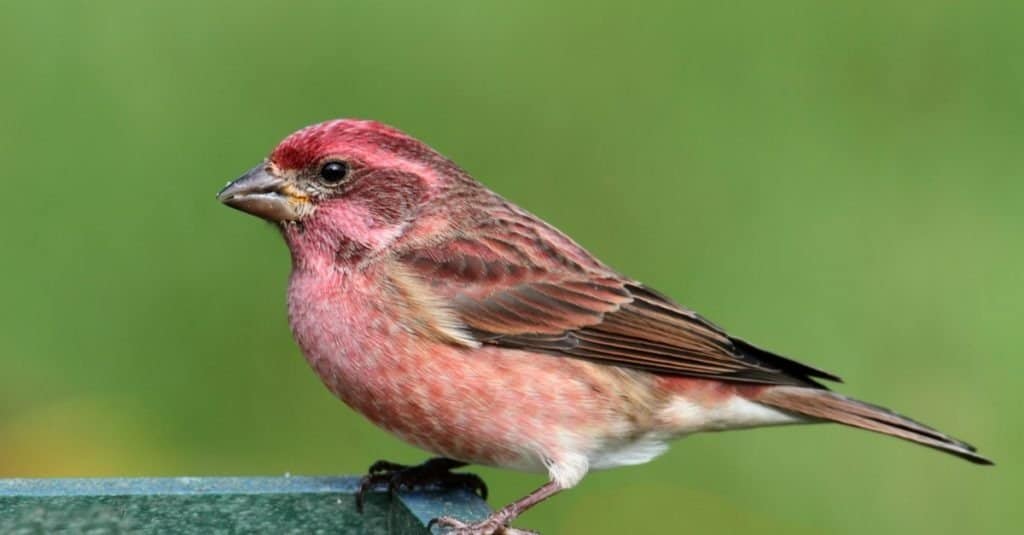
Purple finches thick beaks and short, notched tails.
©Steve Byland/Shutterstock.com
Identification: The purple finch is a large and chunky forest bird with a thick beak and a short, notched tail. Males are reddish-purple on their heads and breasts, giving way to a streaky brown back and wings.
Habitat and Migration: They primarily live in coniferous forests and woodlands, but some may inhabit fields, yards, and shrubs. You will find them across Illinois during the winter.
Diet: Seeds, buds, nectar, berries, fruits, and some insects make up the bulk of their diet.
Nest: You’ll find them nesting in twig and root cups placed far out on a tree limb.
How to Attract to Your Yard: Provide small black oil sunflower seeds.
The photo featured at the top of this post is © Bonnie Taylor Barry/Shutterstock.com
Thank you for reading! Have some feedback for us? Contact the AZ Animals editorial team.






